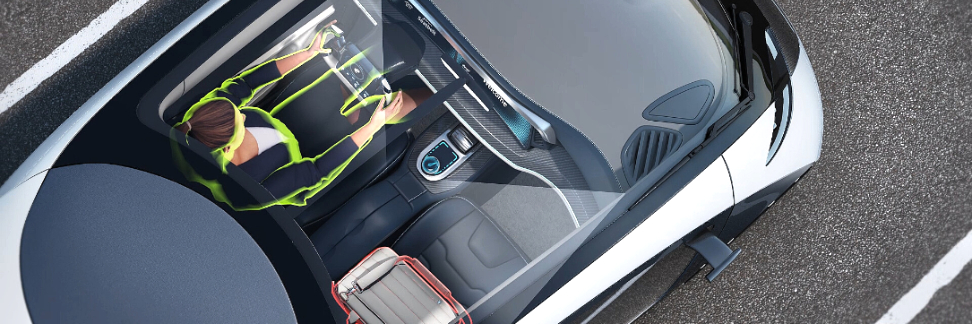Contact
If you have any questions, don't hesitate to contact us

Together with a dedicated optic the sensor device allows to build a Time-of-Flight (ToF) camera which is capable of measuring absolute spatial distance. The device controls a laser-diode or LED sending short pulses of IR light. An integrated array of purpose-designed photo diodes detects the radiation reflected by an object. From the digital data provided by the sensor device the distance information can be derived by a dedicated software algorithm. Laser- and LED-illumination are equally supported.
Functions
| USPs
|
3D object recognition for environmental mapping and gesture detection
High performance with low number of pixels
Our indirect ToF solution can capture 3D maps in both indoor and outdoor environments. Objects such as hands and feet can be detected with a high recognition rate, allowing very reliable and intuitive gesture recognition to be realized with suitable algorithms.
Elmos: Simple 3D ToF Imager | Competitor: Absolute Measurement |
|---|---|
+ Small number of pixels ensures data transmission with simple standard BUS systems | + High Resolution |
All pulsed light sources can be used as emitters (Edge-emitting laser, LEDs, VCSELs)
The choice of light source depends mainly on the application
If high ranges must be achieved and eye safety is not required an EEL should be used.
LEDs or VCSELs should be used to protect the eyes. Here the price is the decisive factor.
Although VCSELs are more expensive, they also provide the better emission characteristics for our sensor.
Characteristics | LED | VCSEL | EEL |
|---|---|---|---|
| Power | Low (Need min. 4 LEDs) | Mid | High |
| Range | Mid (with 4 LEDs) | Mid | High |
| Cost | Low | Mid | High |
| Emission characteristics | Spot | Square | Spot (Diffraction foil or lens needed) |
The choice of wavelength depends mainly on the application
Applications where the user looks directly into the light source, it is better to use wavelengths of 940 nm!
Applications where the user is not looking directly into the light source, it is better to use wavelengths of 850 nm due to the higher sensitivity of the pixel!
| 850 nm | 940 nm |
|---|---|---|
Characteristics | - Visible for human eyes | - Not visible for human eyes |
| Applications | - Easy Open Liftgate (Trunk Opener) | - Infotainment |
It depends on the choice of light source. An EEL requires a lens or a diffractive foil. With VCSELs and LEDs, an optical system is often already integrated.
A lens in front of the sensor is absolutely necessary. Both standard lenses (usually high installation height) and customized lens systems (lower installation height) can be used here
If you have any questions, don't hesitate to contact us